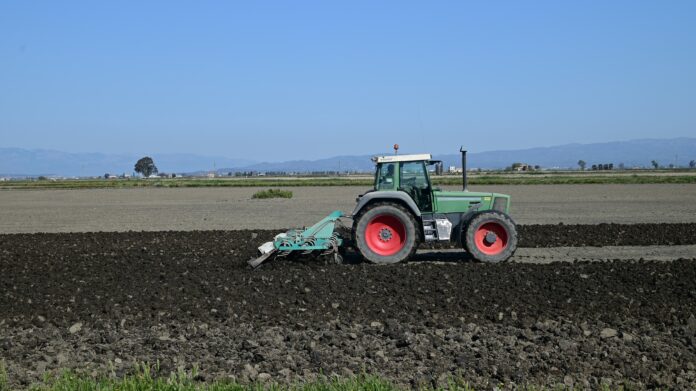A pitchfork is a versatile and essential tool used in various agricultural and gardening tasks. With its long handle and typically three or more sharp tines, a pitchfork is designed to assist in lifting, turning, and moving materials such as hay, straw, compost, and soil. Its iconic design features a straight or slightly curved handle made from wood, fiberglass, or metal, attached to a forked head consisting of sturdy, pointed prongs.
The pitchfork has a rich history that spans centuries, and its usage can be traced back to ancient civilizations. Its fundamental design has remained largely unchanged, emphasizing its effectiveness and reliability. Throughout history, pitchforks have been utilized by farmers, gardeners, and laborers to perform a wide range of tasks, including harvesting crops, spreading manure, aerating soil, and even defending against adversaries.
In agricultural settings, the pitchfork plays a crucial role in the management of hay and straw. Farmers employ pitchforks to lift bales of hay or straw onto wagons or into storage. The prongs of the pitchfork are driven into the tightly packed bales, allowing the farmer to leverage their strength and transfer the weight from the ground to their shoulders. The three tines of the pitchfork are strategically positioned to provide stability and balance, ensuring a secure grip on the load. By using a pitchfork, farmers can handle large quantities of hay or straw efficiently and minimize the risk of injury.
Gardeners also rely on pitchforks for various tasks within their gardens and landscapes. When it comes to composting, a pitchfork is an invaluable tool. Its sturdy tines can penetrate the decomposing organic matter, allowing the gardener to turn the compost pile effectively. This process aerates the compost, facilitating the breakdown of materials and accelerating the decomposition process. By turning the compost with a pitchfork, gardeners ensure that the organic matter receives an adequate supply of oxygen, moisture, and microorganisms, promoting the development of nutrient-rich compost that can be used to enhance soil fertility and plant growth.
In addition to its uses in agriculture and gardening, the pitchfork has also made appearances in literature, art, and cultural symbolism. It is often associated with the concept of hard labor and the working class. Its iconic image has been depicted in numerous paintings, sculptures, and illustrations, further cementing its place in history and popular culture.
The pitchfork’s versatile design has led to variations in its construction to suit different purposes. For instance, in some regions, a pitchfork may have more than three tines, providing additional prongs for increased stability or specialized tasks. The materials used in manufacturing pitchforks have also evolved, with traditional wooden handles being replaced by more durable options such as fiberglass or metal. These modern materials offer enhanced strength and longevity, ensuring that the pitchfork remains a reliable tool for generations to come.
In recent times, technological advancements have also influenced the pitchfork’s design. While the traditional pitchfork remains widely used, mechanized versions, such as motorized hay forks and skid steer attachments, have been developed to streamline and automate certain agricultural tasks. These innovations have increased efficiency and reduced physical exertion, particularly in large-scale farming operations.
Despite the evolution of agricultural practices and the introduction of modern machinery, the pitchfork continues to hold its significance. Its simplicity, reliability, and affordability make it an indispensable tool for small-scale farmers, gardeners, and individuals who appreciate the value of manual labor and sustainable practices. The pitchfork’s enduring presence in various aspects of life is a testament to its timeless utility and iconic status.
The pitchfork is a versatile tool that has played an integral role in agriculture, gardening, and cultural symbolism for centuries. With its distinct design featuring three or more sharp tines attached to a long handle,
the pitchfork offers a range of functions and benefits. Its three tines provide stability and balance, allowing users to lift, turn, and move materials with ease. Whether it’s lifting bales of hay onto wagons, turning compost piles, or aerating soil, the pitchfork’s design enables efficient and effective execution of various tasks.
The pitchfork’s significance in agriculture cannot be overstated. It has been a staple tool for farmers, aiding in the handling of hay, straw, and manure. By driving the sharp tines into tightly packed bales, farmers can effortlessly lift and transport them, minimizing strain on their bodies. The pitchfork’s ability to penetrate and hold the materials securely ensures a reliable grip, preventing accidents and injuries. Moreover, its balanced construction allows for efficient loading and unloading, saving valuable time during busy harvesting seasons.
Gardeners also find immense value in pitchforks for their horticultural endeavors. When it comes to composting, the pitchfork becomes an essential tool. By using the prongs to turn the compost pile, gardeners promote aeration and decomposition, resulting in nutrient-rich soil amendments. The pitchfork’s sturdy construction withstands the demands of the turning process, ensuring its longevity and continued effectiveness. Furthermore, when it comes to cultivating and preparing soil beds, the pitchfork can be used to loosen compacted earth, remove weeds, and mix amendments, providing an optimal environment for plant growth.
Beyond its practical applications, the pitchfork has permeated various aspects of human culture. Its image has been immortalized in literature, art, and even religious iconography. In literature, the pitchfork often symbolizes labor, hardship, and the working class. Artists have captured its form in paintings, sculptures, and other visual mediums, depicting both its utilitarian function and its symbolic significance. In some religious and mythological contexts, the pitchfork has been associated with deities or characters representing power, authority, or even the concept of evil. Its enduring presence in cultural representations further underscores its enduring status as an iconic tool.
While the traditional design of the pitchfork remains widely prevalent, advancements in technology and materials have introduced variations and improvements. Modern pitchforks may feature additional tines or innovative handle materials, such as fiberglass or metal alloys, to enhance durability and longevity. These adaptations ensure that the pitchfork remains a reliable tool in contemporary agricultural and gardening practices. Moreover, mechanized versions of the pitchfork, such as motorized hay forks and attachments for machinery like skid steers, have emerged to cater to the demands of large-scale operations. These advancements streamline tasks, increase efficiency, and reduce physical exertion, while still incorporating the core principles and functionalities of the traditional pitchfork.
In conclusion, the pitchfork’s timeless design, versatile functionality, and cultural significance have solidified its place as an indispensable tool in agriculture, gardening, and beyond. Its three or more sharp tines, attached to a long handle, provide stability, balance, and the ability to lift, turn, and move various materials. Farmers and gardeners rely on the pitchfork for tasks such as handling hay, turning compost, and cultivating soil. Its enduring presence in literature, art, and cultural symbolism further underscores its iconic status. As technology advances, the pitchfork continues to evolve, with modern variations and mechanized adaptations enhancing its efficiency while retaining its fundamental principles. Through its simplicity, reliability, and affordability, the pitchfork continues to serve as a testament to the value of manual labor and sustainable practices in a rapidly changing world.














